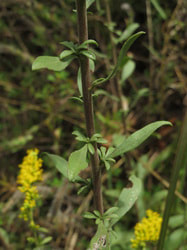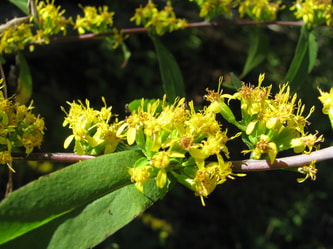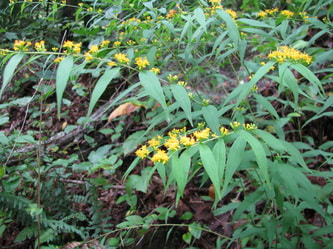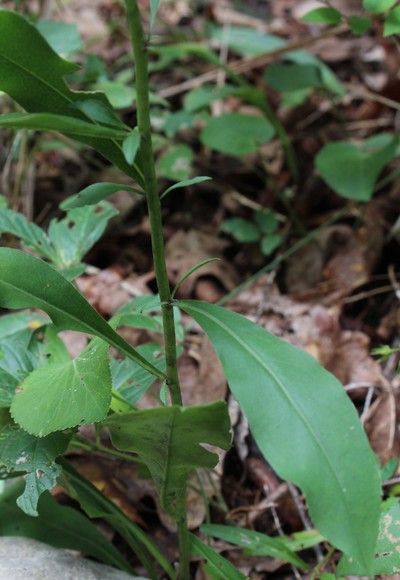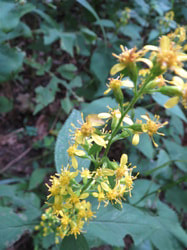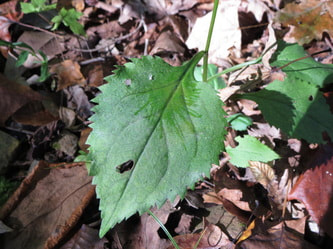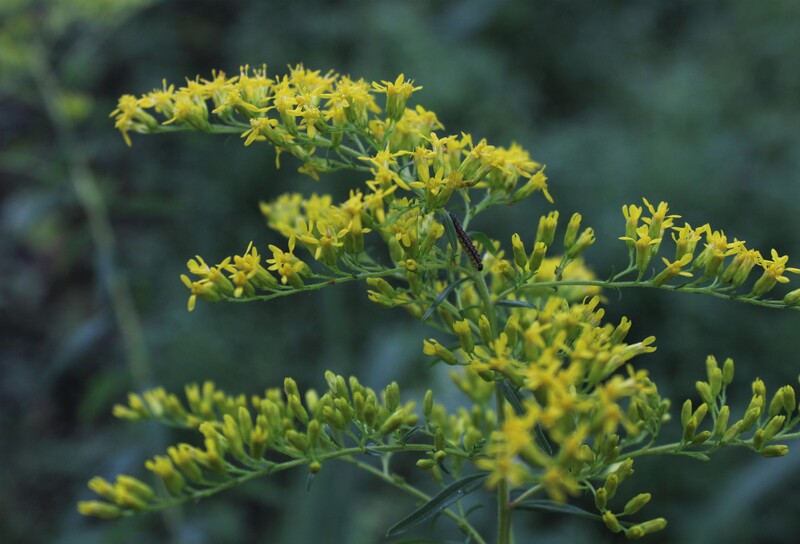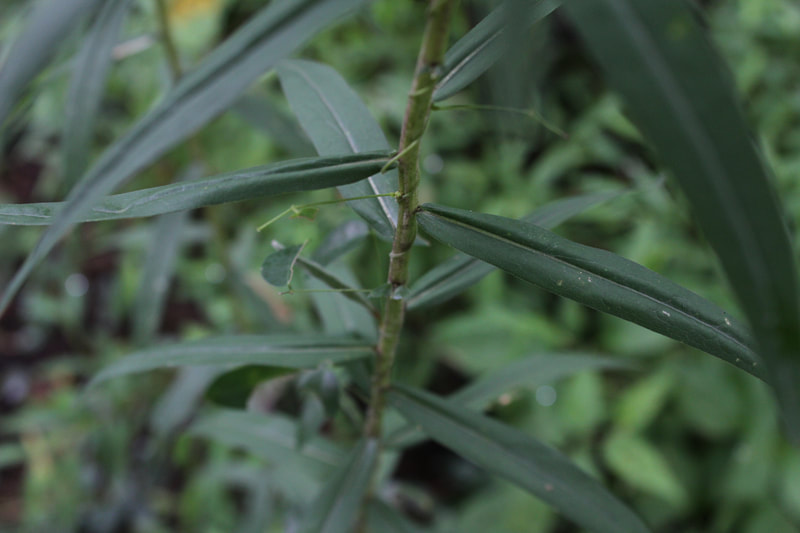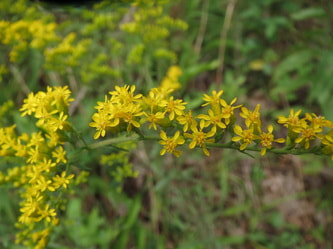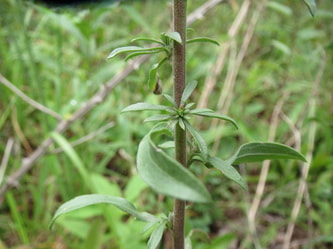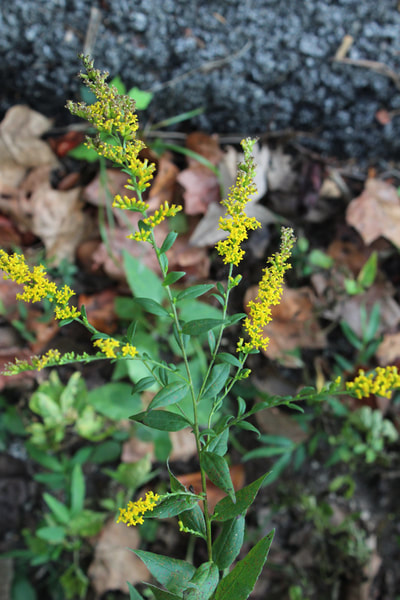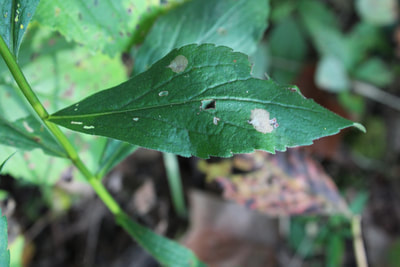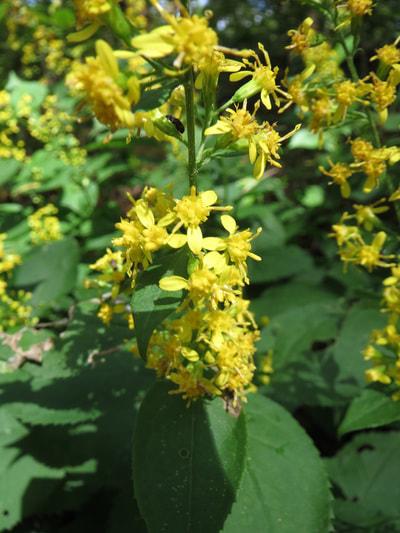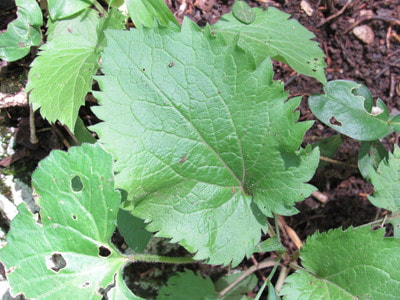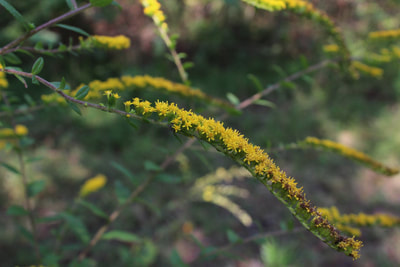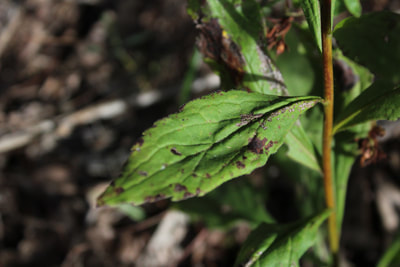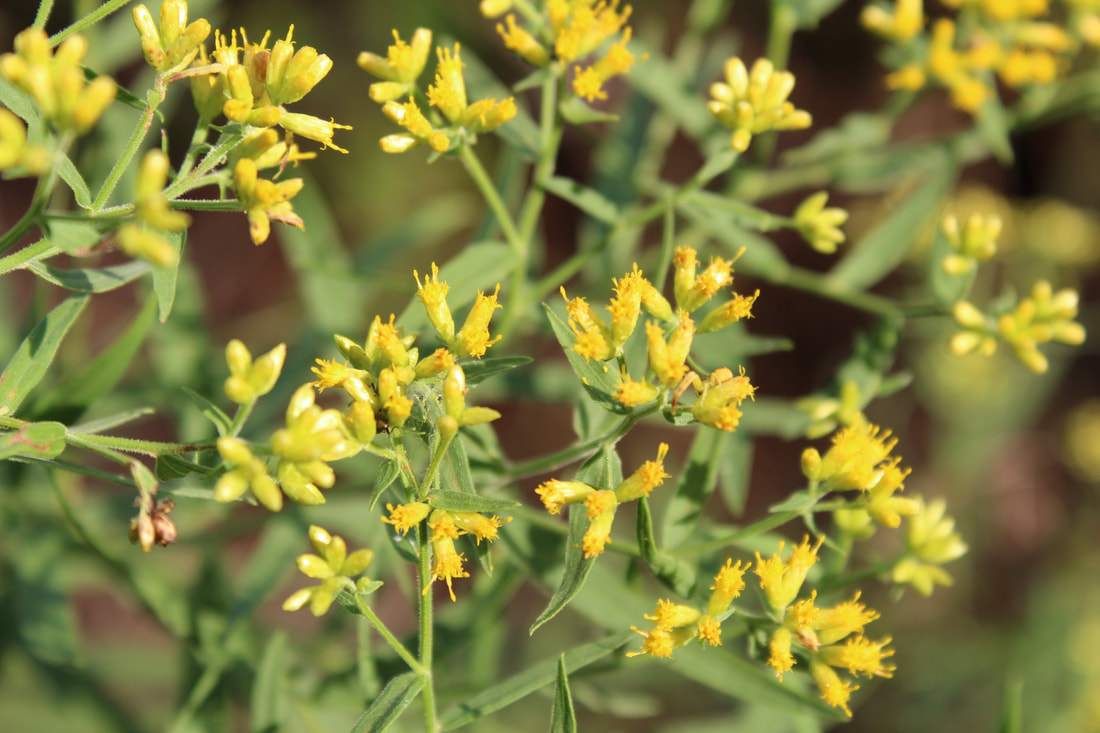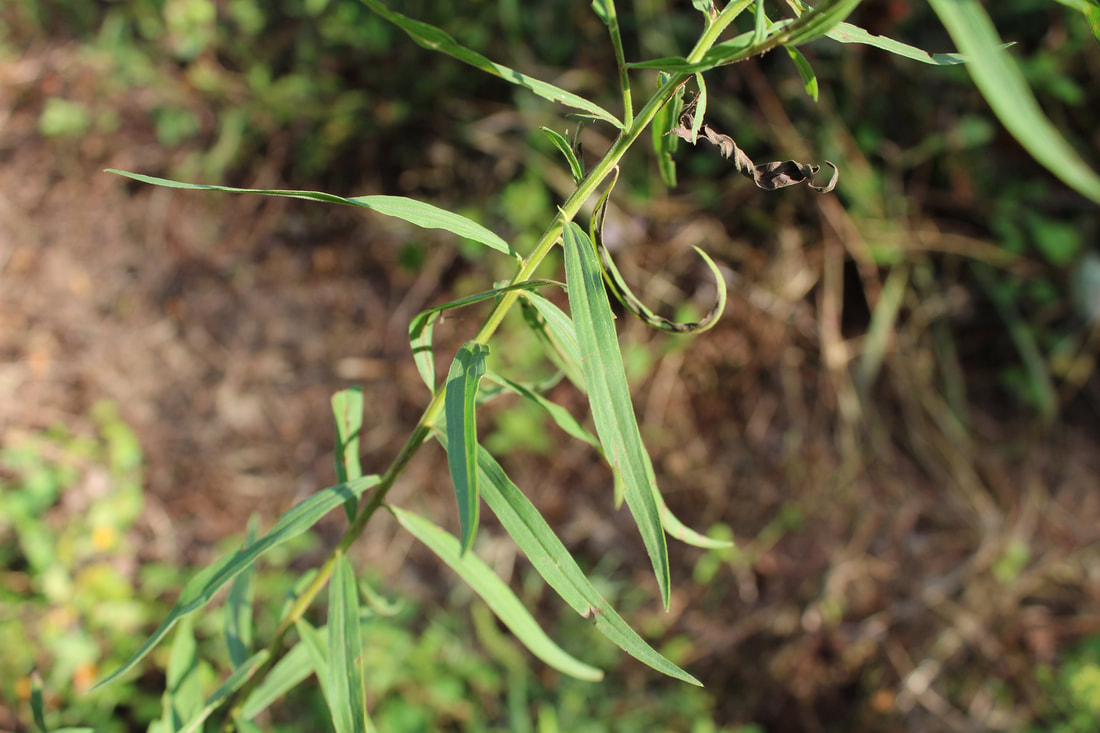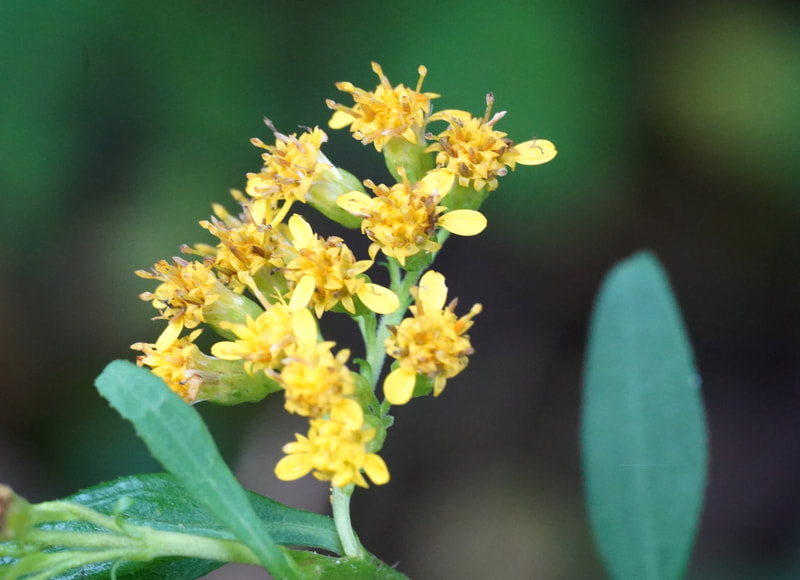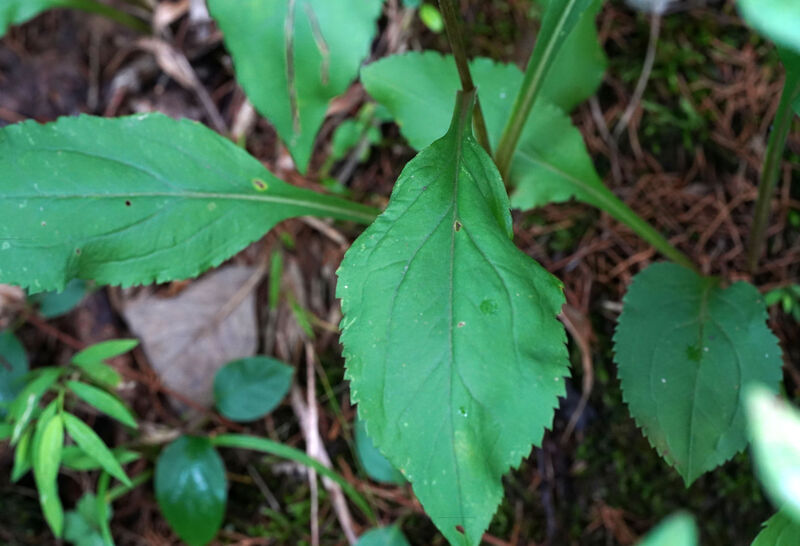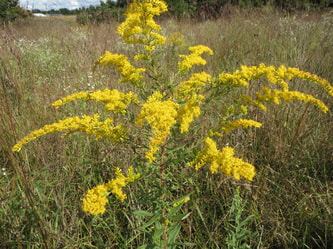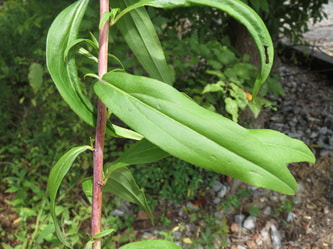Guide to Area Goldenrod Species
Goldenrod species are superficially very similar, but a combination of characteristics can make them easy to ID. Species get taller as you down this list. To see a printable Excel summary of this page, click here.
Flowers on one side of the stem are secund.
Flowers on one side of the stem are secund.
Goldenrod, gray - Solidago nemoralis
|
Goldenrod, blue-stemmed - Solidago caesia. A common one to three-foot woodland plant. Blue-purple stems are smooth, sometimes waxy; flowers are borne all along the stems, interspersed with untoothed, pointed leaves. Individual flowers have only 3 to 5 rays. |
Goldenrod, showy - Solidago speciosa. A short, one to three-foot plant with an erect inflorescence; leaves are smooth, mostly untoothed, tapering to the base; flowers have 6 to 9 ray petals. |
Goldenrod, zigzag - Solidago flexicaulis. This one to three-foot woodland species has stems which bend at the nodes; leaves are round, sharp-toothed and pointed at both ends; flowers have only three or four ray petals. |
Goldenrod, sweet - Solidago odora
|
|
|
Goldenrod, false - Solidago sphacelata
|
Goldenrod, riverbank - Solidago rupestris
|
Goldenrod, rough - Solidago rugosa Branching inflorescence; two to four feet tall; stems are rough-hairy; lower leaves are wrinkled, heavily veined and pointed, with ragged teeth and winged, tapering stems. Each flower has 6 to 10 rays. |
Goldenrod, flat-topped - Euthamia graminifolia
|
|
|
Goldenrod, smooth - Solidago gigantea. Our other common, very tall species of open fields, standing to seven feet; leaves are very smooth. Stem is smooth, green or purple, sometimes waxy; 7 to 15 ray petals. |
Goldenrod, rough-leaved - Solidago patula. Uncommon two to seven foot species of wet soils; lower leaves are very large, up to twelve inches long; flowers have 6 to 12 rays. |

